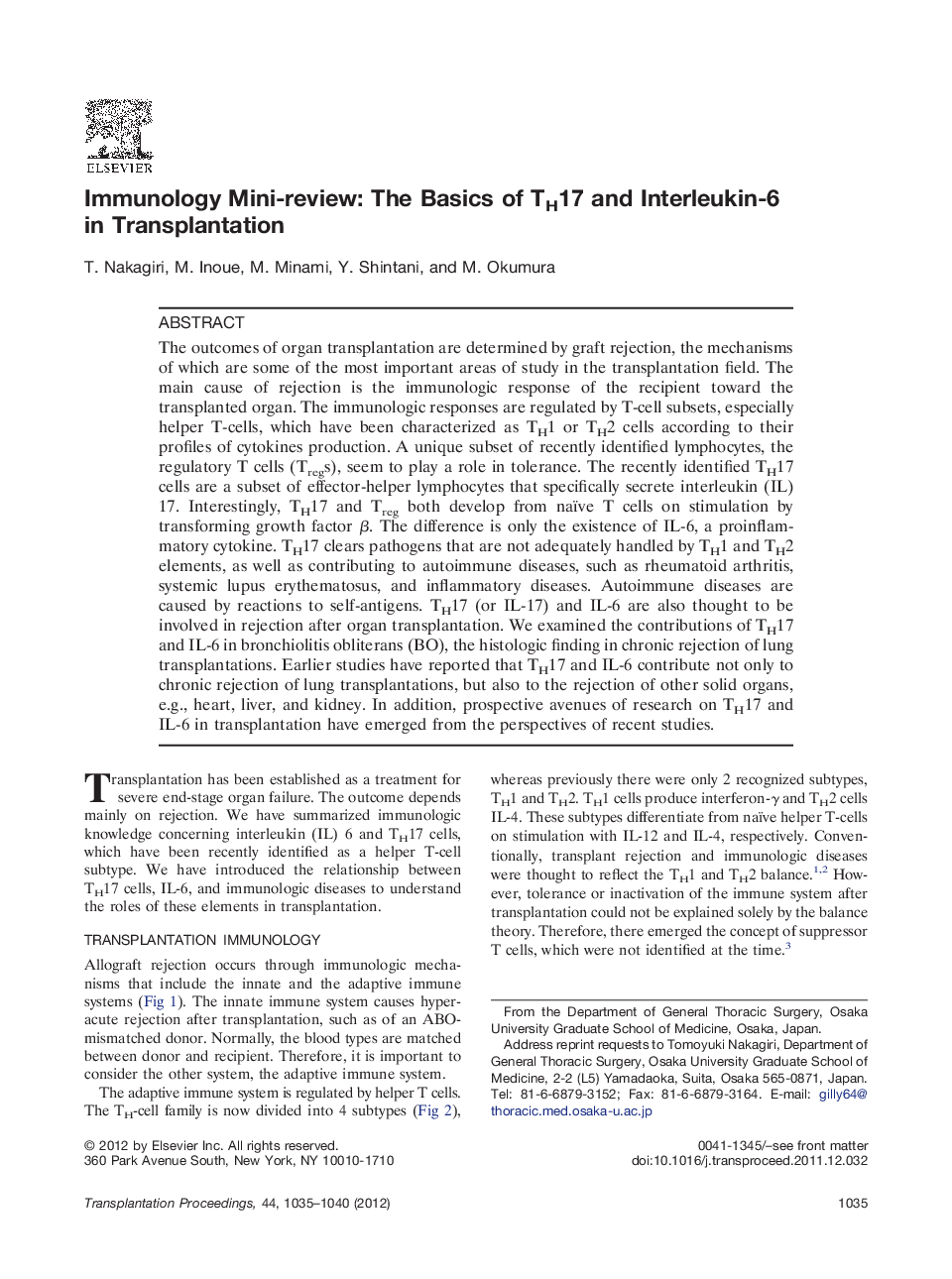| Article ID | Journal | Published Year | Pages | File Type |
|---|---|---|---|---|
| 4256857 | Transplantation Proceedings | 2012 | 6 Pages |
The outcomes of organ transplantation are determined by graft rejection, the mechanisms of which are some of the most important areas of study in the transplantation field. The main cause of rejection is the immunologic response of the recipient toward the transplanted organ. The immunologic responses are regulated by T-cell subsets, especially helper T-cells, which have been characterized as TH1 or TH2 cells according to their profiles of cytokines production. A unique subset of recently identified lymphocytes, the regulatory T cells (Tregs), seem to play a role in tolerance. The recently identified TH17 cells are a subset of effector-helper lymphocytes that specifically secrete interleukin (IL) 17. Interestingly, TH17 and Treg both develop from naïve T cells on stimulation by transforming growth factor β. The difference is only the existence of IL-6, a proinflammatory cytokine. TH17 clears pathogens that are not adequately handled by TH1 and TH2 elements, as well as contributing to autoimmune diseases, such as rheumatoid arthritis, systemic lupus erythematosus, and inflammatory diseases. Autoimmune diseases are caused by reactions to self-antigens. TH17 (or IL-17) and IL-6 are also thought to be involved in rejection after organ transplantation. We examined the contributions of TH17 and IL-6 in bronchiolitis obliterans (BO), the histologic finding in chronic rejection of lung transplantations. Earlier studies have reported that TH17 and IL-6 contribute not only to chronic rejection of lung transplantations, but also to the rejection of other solid organs, e.g., heart, liver, and kidney. In addition, prospective avenues of research on TH17 and IL-6 in transplantation have emerged from the perspectives of recent studies.
